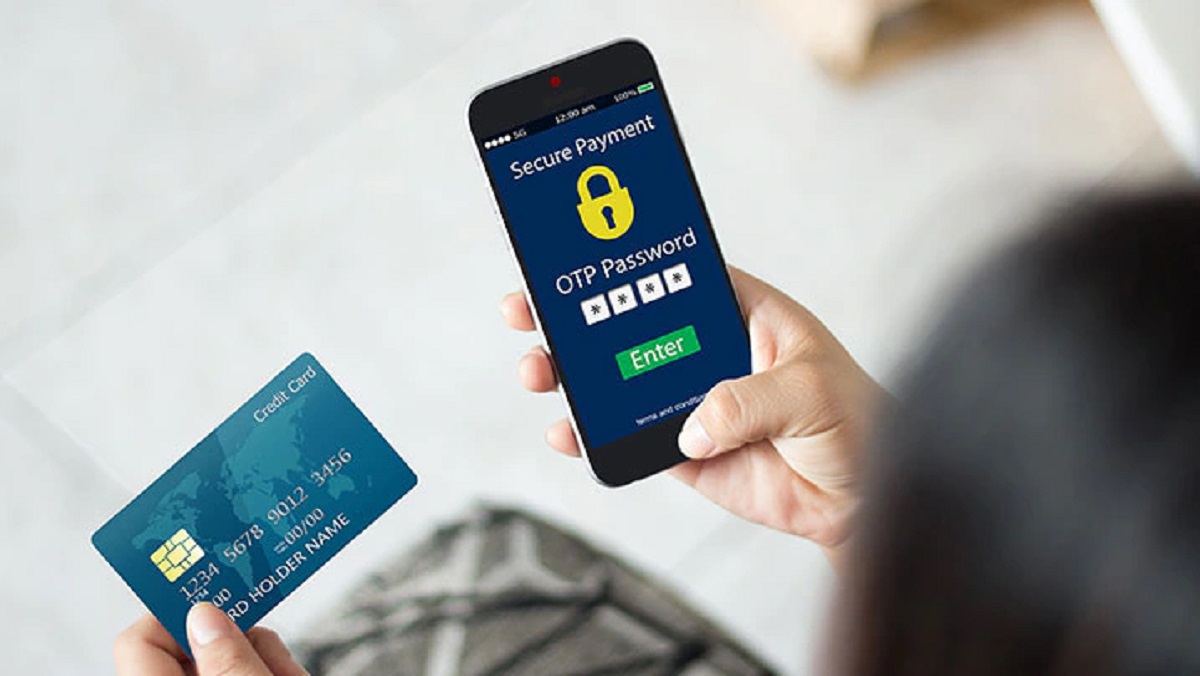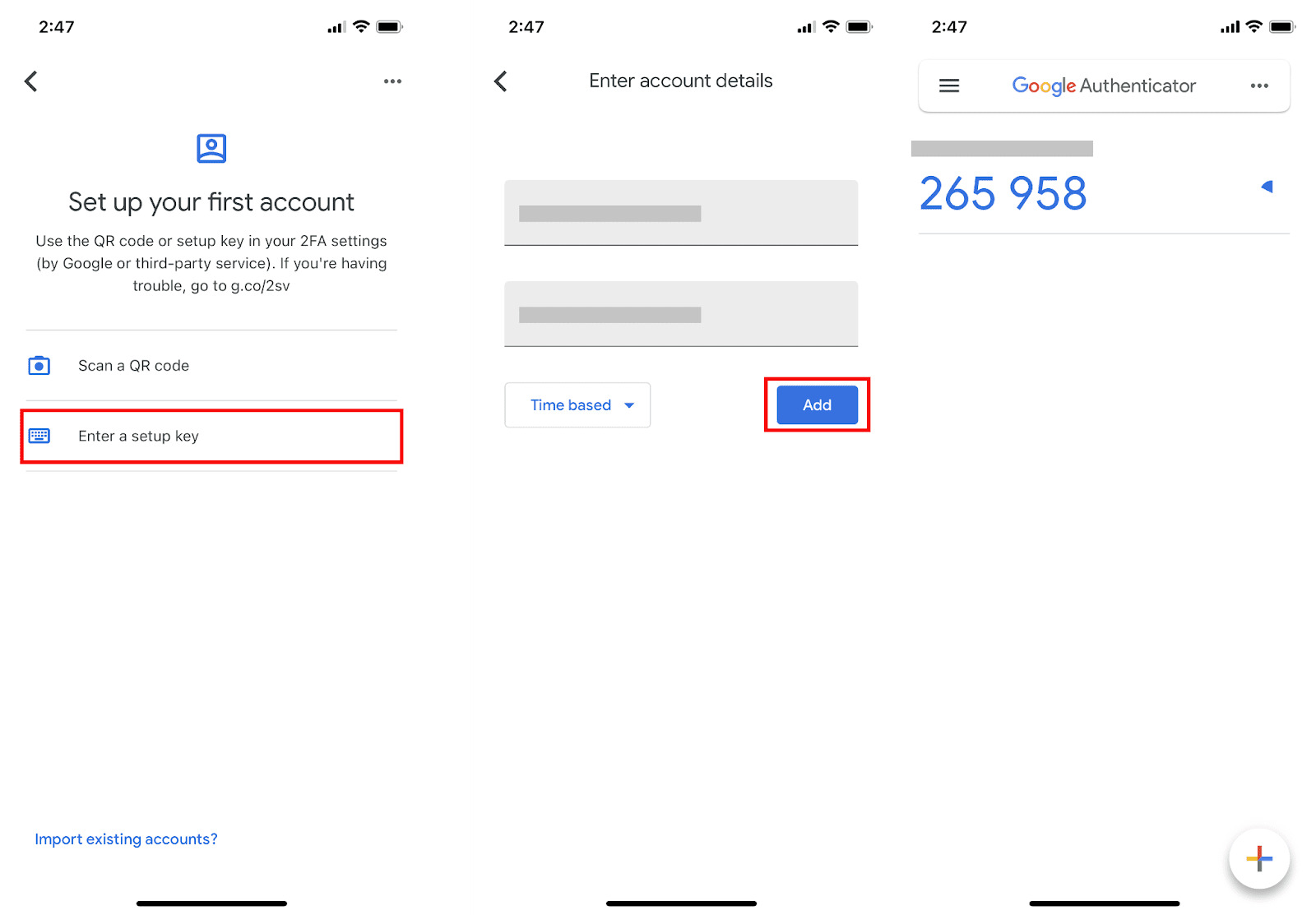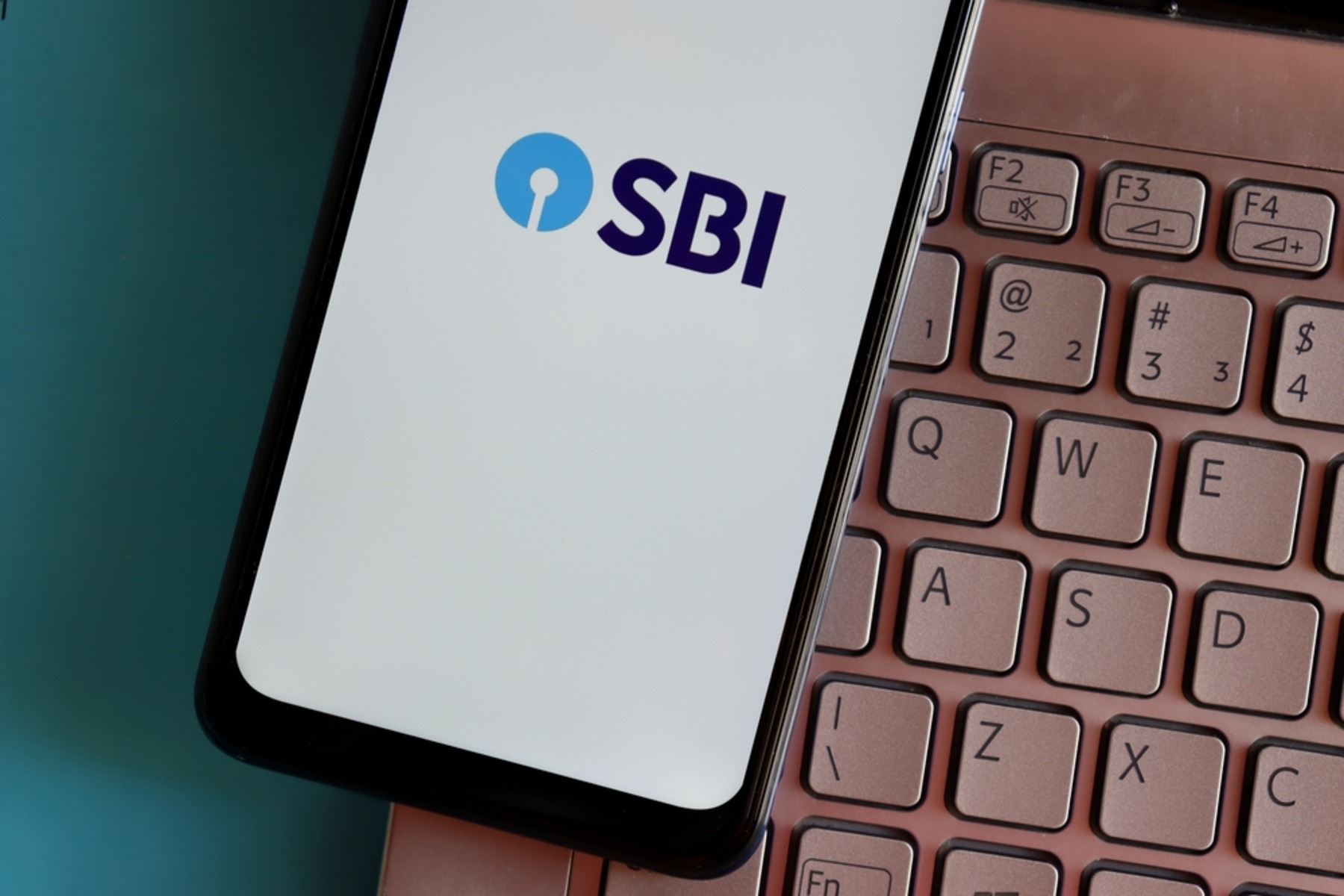Introduction
In today’s technologically advanced world, online banking has become an integral part of our lives. With the convenience it offers, banking transactions can now be done anytime and anywhere. However, along with the convenience comes the concern for security. This is where OTP, or One-Time Password, plays a crucial role.
OTP is a security feature used by banks to provide an extra layer of protection for online transactions. It ensures that only authorized individuals can access their accounts and make transactions. By understanding what OTP is and how it works, customers can have peace of mind knowing that their financial information is safeguarded.
So, what exactly does OTP mean in banking? OTP is a unique, randomly generated password that is valid for only a short period of time or a single transaction. It is sent to the customer’s registered mobile number or email address and is required to be entered during a specific transaction.
OTP is important in banking as it acts as a second verification step, adding an extra layer of security to online banking transactions. By requiring customers to provide the OTP, banks can ensure that even if someone gains unauthorized access to their account credentials, they won’t be able to complete the transaction without the OTP.
Now, let’s delve deeper into how OTP works. When a customer initiates a transaction, such as transferring funds or changing account settings, the bank system generates a unique OTP and sends it to the customer’s registered mobile number or email address. The OTP is time-sensitive and typically expires within a few minutes.
Customers are then prompted to enter the OTP in the provided field on the banking platform. Once the correct OTP is entered, the transaction is validated, and the customer can proceed. Since OTPs are valid for a single use or a short period of time, they are highly secure and effective in preventing unauthorized access to accounts.
Banks utilize various methods to deliver OTPs to their customers. The most common methods include SMS, email, and dedicated OTP apps. SMS is the most widely used method, where the OTP is sent as a text message to the customer’s mobile phone. Email is another popular method, where the OTP is sent to the registered email address. Some banks also provide dedicated OTP apps that generate OTPs directly on the customer’s mobile device.
The benefits of OTP in banking are significant. It enhances security, protects customers’ financial information, and reduces the risk of fraudulent activities. By requiring OTP authentication, banks ensure that only authorized individuals can access and transact on their accounts, minimizing the chances of unauthorized access and identity theft.
To ensure the effectiveness of OTP, banks have implemented security measures to prevent misuse. These include regular OTP expiration, encryption of OTPs during transmission, and limiting the number of attempts to enter the correct OTP. Additionally, banks monitor and analyze transaction patterns to detect any suspicious activity and provide timely alerts to customers.
While OTP is a valuable security measure in banking, it does come with its challenges. Technical issues, such as delays in receiving OTPs or expired OTPs, can cause inconvenience to customers. Additionally, the reliance on mobile phones or email for OTP delivery may pose risks if these channels are compromised. Banks need to continuously improve their systems and address these challenges to ensure a seamless and secure banking experience.
Definition of OTP
In the realm of banking and online security, OTP stands for One-Time Password. It is a unique and temporary password generated by the banking system for a specific transaction or login attempt. Unlike traditional static passwords, OTPs provide an extra layer of security by ensuring that the password expires after a single use or a short duration.
An OTP is typically a string of alphanumeric characters or a combination of numbers and special symbols. It is randomly generated by the bank’s system and sent to the customer’s registered mobile number or email address as a means of verification. The customer must enter the correct OTP during the designated transaction to authenticate and authorize the activity.
The primary purpose of an OTP is to prevent unauthorized access and fraudulent activities. Static passwords are more susceptible to being compromised as they can be stolen, guessed, or intercepted. However, an OTP, being unique for each transaction, significantly reduces the risk of unauthorized access even if someone manages to obtain the user’s regular login credentials.
The concept of OTP is rooted in two-factor authentication (2FA) or multi-factor authentication (MFA). It adds an additional layer of security, ensuring that a user’s identity is verified through something they own (i.e., their mobile device or email account) in addition to something they know (i.e., their regular login credentials).
OTP authentication is widely utilized in online banking to protect sensitive financial information, such as account balances, transaction history, and fund transfers. It is also employed in other sectors, including e-commerce, social media platforms, and various online services that require secure access to user accounts.
OTP provides a temporary and dynamic security measure, eliminating the risk of stolen or reused passwords. Each OTP is valid only for a limited period, typically ranging from a few minutes to hours, depending on the system’s configuration. Once the OTP expires, it becomes useless, and a new one needs to be generated for subsequent transactions.
It is important to note that an OTP is different from a permanent password. While regular passwords are chosen by the users themselves and remain consistent over time (unless manually changed), OTPs are unique, time-limited, and generated by the system, ensuring a higher level of security.
By incorporating OTP as part of their security protocols, banks can mitigate the risks associated with password-based authentication, providing customers with a safer and more secure online banking experience.
Why is OTP important in banking?
In the world of online banking, security is of paramount importance. With the increasing prevalence of cyber-attacks and identity theft, banks have implemented various measures to protect their customers’ sensitive financial information. One such measure is the use of OTP, or One-Time Password. OTP plays a crucial role in banking due to its significance in enhancing security and mitigating fraud risks.
First and foremost, OTP provides an additional layer of authentication for online banking transactions. Regular login credentials, such as usernames and passwords, can be compromised through various means, including phishing scams, malware, or brute force attacks. With OTP, even if an attacker manages to obtain a user’s login credentials, they would still require the unique OTP to complete the transaction. This two-factor authentication significantly reduces the risk of unauthorized access to bank accounts.
OTP is particularly important in banking because it helps protect against financial fraud. By using OTP, banks can ensure that transactions can only be authorized by the legitimate account holder. This prevents unauthorized individuals or cybercriminals from tampering with funds or making fraudulent transactions. The temporary nature of OTPs further restricts the window of opportunity for fraudsters to exploit stolen login credentials.
Furthermore, OTP adds an element of convenience for customers. While it may seem counterintuitive, OTP adds an extra layer of security without requiring customers to memorize complex, ever-changing passwords. With OTP, customers can authenticate transactions quickly and securely, without the need to remember a multitude of different passwords for various online services.
Another reason why OTP is important in banking is its ability to provide real-time transaction verification. When customers receive an OTP, they can be confident that their transaction is in progress. This adds a sense of transparency and trust, allowing customers to feel more secure about their financial activities. Moreover, OTPs often have a limited validity period, which ensures that they cannot be reused or exploited for future unauthorized transactions.
OTP is also crucial in protecting customers from identity theft. With the increasing prevalence of stolen personal information and data breaches, protecting one’s identity is more important than ever. The use of OTP ensures that only the legitimate account holder can complete transactions, preventing unauthorized individuals from posing as the account holder and gaining access to sensitive financial information.
In summary, OTP is vital in the field of banking due to its ability to enhance security, protect against financial fraud, provide convenience, offer real-time transaction verification, and prevent identity theft. By implementing OTP authentication, banks can ensure the safety and trust of their customers’ online banking experiences.
How does OTP work?
Understanding how OTP, or One-Time Password, works is essential in comprehending its role in enhancing the security of online banking transactions. OTP utilizes a temporary and dynamically generated password to authenticate and authorize transactions, providing an additional layer of security beyond traditional login credentials.
When a customer initiates a transaction, such as logging in or performing a fund transfer, the banking system generates a unique OTP. This OTP is specifically generated for that particular transaction and is valid for a limited period or for a single use only. The OTP is then sent to the customer’s registered mobile number or email address through a secure channel.
Upon receiving the OTP, the customer needs to enter it into the designated field on the banking platform to validate and authorize the specific transaction. The banking system verifies whether the entered OTP matches the OTP generated for that transaction. If the OTP is correct and within the valid timeframe, the transaction is successfully authenticated, and the customer can proceed.
The generation of OTPs involves a combination of factors to ensure their uniqueness and randomness. Generally, OTPs are created using strong cryptographic algorithms that make it extremely difficult to predict or replicate them. Each OTP consists of a series of alphanumeric characters or a combination of numbers and special symbols, creating a highly secure password.
OTP can be generated in multiple ways, depending on the bank’s system and customer preference. One common method is through SMS or text messages, where the OTP is sent to the customer’s registered mobile number. When a transaction is initiated, the OTP is generated and automatically sent to the customer’s phone as a text message. The customer then enters the OTP to authenticate the transaction.
Another method of OTP delivery is through email. In this approach, the OTP is sent to the customer’s registered email address. When the customer initiates a transaction, they receive an email containing the OTP. The customer enters the OTP from the email into the banking platform to validate the transaction. It is crucial for customers to ensure the security of their email accounts to prevent unauthorized access to the OTPs.
Some banks also offer dedicated OTP apps that generate OTPs directly on the customer’s mobile device. These apps work offline and provide an added layer of security by generating OTPs within the device itself. Customers can access the app, complete the transaction, and enter the displayed OTP to validate the operation.
The temporary nature of OTPs ensures that they cannot be reused or exploited by attackers. Once the OTP has been used or has expired, it becomes invalid, preventing any unauthorized access to the customer’s account or fraudulent activity.
By implementing OTP authentication, banks significantly enhance the security of online transactions. OTPs act as a second factor of authentication, ensuring that even if an attacker manages to obtain a user’s login credentials, they would still require the unique OTP to complete the transaction. This added layer of security provides peace of mind and reassurance to customers during their online banking activities.
Different methods of receiving OTP
OTP, or One-Time Password, is an essential security feature in online banking that provides an additional layer of protection for transactions. To ensure convenience and accessibility, banks employ various methods for customers to receive their OTPs. These methods include SMS, email, and dedicated OTP apps, each offering unique advantages and considerations.
The most common method of receiving OTPs is through SMS, or text messages. When a customer initiates a transaction, the banking system generates a unique OTP and sends it as a text message to the customer’s registered mobile number. SMS delivery is instantaneous, and most customers have access to their mobile phones at all times, making it a convenient and widely used method. However, it is essential for customers to secure their mobile devices to prevent unauthorized access to SMS containing OTPs.
Another method of receiving OTPs is through email. In this approach, the OTP is sent to the customer’s registered email address. Email delivery provides flexibility, as customers can access their emails on various devices such as smartphones, tablets, or computers. It is crucial for customers to ensure the security of their email accounts to prevent unauthorized access to the OTPs. Banks may also implement additional security measures for email delivery, such as encryption, to safeguard the OTPs during transmission.
Some banks offer dedicated OTP apps that generate OTPs directly on the customer’s mobile device. These apps work offline and provide an extra layer of security by generating OTPs within the user’s device. Customers can access the app, generate the OTP, and use it to authenticate transactions. Dedicated OTP apps eliminate the need for SMS or email delivery, providing a more secure and convenient method. However, customers must ensure the security of their mobile devices and protect the application’s access.
Biometric authentication methods have also begun to emerge as a means of receiving OTPs. Biometric factors such as fingerprint, facial recognition, or iris scanning can be used to verify the user’s identity and generate OTPs. These methods offer a high level of security and convenience, as users do not need to remember or carry any additional authentication factors. Biometric OTP methods are still relatively new and not widely adopted; however, they are expected to gain popularity as biometric technology continues to advance.
It is important to note that banks may offer multiple options for OTP delivery, allowing customers to choose the method that suits them best. Customers can specify their preferred delivery method when registering for online banking or through the banking platform’s settings. Banks also ensure that the chosen delivery method is securely integrated into their systems to protect the confidentiality and integrity of the OTPs.
Regardless of the chosen method, it is crucial for customers to regularly update and safeguard their contact information with the bank. This ensures that OTPs are delivered correctly and promptly, reducing the risk of delays or unauthorized access to sensitive information.
By offering various methods of receiving OTPs, banks aim to provide flexibility and convenience to their customers while maintaining the utmost security. Customers can select the preferred method based on their accessibility, security considerations, and personal preferences, allowing for a seamless and secure online banking experience.
Benefits of OTP in banking
OTP, or One-Time Password, is a crucial security measure implemented by banks to protect their customers’ online transactions. It offers numerous benefits that enhance security, mitigate fraud risks, and provide peace of mind to customers engaging in online banking activities.
One of the primary benefits of OTP is its ability to provide an additional layer of authentication. Traditional login credentials, such as usernames and passwords, can be compromised through various means, such as phishing scams or data breaches. By requiring the unique OTP, even if an attacker gains access to a user’s login credentials, they would still need the OTP to complete the transaction, significantly reducing the risk of unauthorized access.
OTP plays a crucial role in preventing financial fraud. It ensures that transactions can only be authorized by the verified account holder. Even if an unauthorized individual gains access to a user’s login details, they cannot proceed with the transaction without the correct OTP. This provides an effective defense against fraudulent activities, protecting customers from unauthorized fund transfers or tampering with their accounts.
The temporary nature of OTPs adds an extra layer of security. Each OTP is valid for a limited period or for a single use only. This prevents the reuse or misuse of OTPs, further reducing the risk of unauthorized access. Any unauthorized attempt to use an expired or previously used OTP will be unsuccessful, ensuring the transaction’s integrity.
OTP authentication offers convenience for customers. Instead of requiring customers to memorize complex and ever-changing passwords, OTPs provide a simpler and more user-friendly method of authentication. Customers only need to enter the unique OTP for the specific transaction, eliminating the need to remember multiple passwords for various online services.
Real-time transaction verification is another significant benefit of OTP in banking. When customers receive an OTP, they can be confident that their transaction is in progress. This adds a sense of transparency and trust, allowing customers to feel more secure about their financial activities. Additionally, the temporary validity of OTPs ensures that transactions are completed promptly and protect against delays or disruptions.
OTP also plays a vital role in preventing identity theft. With the increasing prevalence of data breaches and stolen personal information, protecting one’s identity is paramount. OTP ensures that only legitimate account holders can complete transactions, preventing unauthorized individuals from posing as the account owner and gaining access to sensitive financial information.
The use of OTPs in banking systems also promotes regulatory compliance. In many jurisdictions, financial institutions are required to implement strong security measures to protect customer data. By utilizing OTP authentication, banks demonstrate their commitment to regulatory compliance and safeguarding their customers’ information.
By incorporating OTP authentication, banks not only increase the security of online transactions but also build trust and confidence with their customers. With the assurance that their transactions are protected by OTP, customers can engage in online banking activities with peace of mind, knowing that their financial information is safeguarded.
In summary, the benefits of OTP in banking are numerous – it provides an additional layer of authentication, protects against financial fraud, offers convenience, ensures real-time transaction verification, prevents identity theft, promotes regulatory compliance, and enhances customer trust. The implementation of OTP authentication ensures a more secure and seamless online banking experience for customers.
Security measures for OTP
OTP, or One-Time Password, is a vital security feature in online banking that helps protect transactions and customer data. To ensure the highest level of security, banks implement various measures to safeguard the generation, delivery, and use of OTPs.
One of the key security measures for OTP is the generation of strong and random passwords. OTPs are typically generated using cryptographic algorithms that produce complex and unique passwords. This randomness ensures that OTPs cannot be easily predicted or reproduced by attackers, making them highly secure and resistant to brute force attacks.
Encryption is another critical security measure applied to OTPs. Banks use encryption techniques to protect the transmission of OTPs from the banking system to the customer’s mobile device or email address. Encryption adds an additional layer of protection, preventing unauthorized access or interception of OTPs during the delivery process.
Banks also implement measures to ensure the secure delivery of OTPs to customers. When sending OTPs via SMS, banks use secure protocols to transmit the messages, minimizing the risk of interception or tampering. Similarly, when delivering OTPs via email, secure email channels and encryption protocols are employed to protect the confidentiality and integrity of the OTPs.
OTP delivery methods often involve secure channels. Banks work closely with telecommunication providers to ensure the secure delivery of OTPs through SMS. They also collaborate with email service providers to implement secure email protocols and safeguard the delivery of OTPs to customers’ email addresses. These collaborations and partnerships are crucial to maintaining the security of OTP delivery channels.
A key security consideration is the timeliness and expiration of OTPs. OTPs are typically valid for a limited duration, usually ranging from a few minutes to hours, depending on the banking system’s configuration. This time constraint prevents the reuse or prolonged use of OTPs, reducing the risk of unauthorized access. Banks implement strict expiration policies to ensure OTPs become invalid after the specified time period, forcing customers to generate new OTPs for subsequent transactions.
Another crucial measure is limiting the number of attempts to enter the correct OTP. Banks typically impose restrictions on the number of times a customer can attempt to enter an OTP within a specific timeframe. This protects against potential brute force attacks or systematic guessing of OTPs by malicious actors. After a certain number of unsuccessful attempts, the banking system may restrict further access or require additional steps for verification.
Continuous monitoring and analysis of transaction patterns is also essential to detect any suspicious activity related to OTP usage. Banks employ sophisticated fraud detection systems that analyze transaction behavior, alerting them to any abnormal or fraudulent activities. These alerts enable banks to take immediate action, such as suspending transactions or contacting customers to verify their activities, adding an extra layer of security to OTP-based authentication.
Customer education and awareness are vital aspects of ensuring the security of OTPs. Banks provide informational resources to educate customers about the importance of keeping their registered mobile numbers and email addresses up to date, as well as the need to secure their devices and communications channels. By promoting customer awareness, banks empower users to take an active role in protecting their online banking transactions.
In summary, security measures for OTP in banking include the generation of strong and random passwords, encryption of OTPs during transmission, secure delivery channels, timely expiration of OTPs, limitations on the number of attempts, continuous monitoring and analysis of transaction patterns, and customer education. By implementing these measures, banks ensure the robustness and effectiveness of OTP authentication, providing customers with a secure online banking experience.
Challenges with OTP in banking
While OTP, or One-Time Password, is an effective security measure in online banking, it is not without its challenges. Banks face several hurdles in implementing and optimizing OTP authentication to ensure a seamless and secure banking experience for their customers.
One of the primary challenges with OTP is the potential for technical issues. Delays in receiving OTPs or experiencing system failures can disrupt the transaction process and cause frustration for customers. These technical glitches can be a result of network congestion, system maintenance, or issues with the delivery channels, such as SMS or email. Banks need to continually monitor and address these technical challenges to provide a reliable OTP authentication system.
Ensuring the timely and accurate delivery of OTPs is another challenge. In some cases, customers may face delays in receiving OTPs due to network congestion or delays in SMS or email delivery. This can lead to frustration and may hinder the completion of time-sensitive transactions. Banks need to establish robust delivery systems, collaborate with telecommunication providers and email service providers, and stay updated with emerging technologies to provide prompt OTP delivery to customers.
The expiration time of OTPs can also pose challenges. While OTPs need to be time-limited for security reasons, too short expiration times may inconvenience customers who may not be able to complete the transaction within the given timeframe. On the other hand, longer expiration times may increase the risk of unauthorized access to OTPs. Striking the right balance between security and user convenience is essential in determining the appropriate expiration time for OTPs.
There is a potential risk of mobile phones or email accounts being compromised, which could lead to unauthorized access to OTPs. If an attacker gains access to a customer’s mobile device or email account, they may be able to intercept or access OTPs sent through these channels. Banks need to educate customers on the importance of securing their devices and email accounts and should consider implementing additional security measures such as biometric authentication to further protect OTP delivery.
Some customers may find it challenging to adapt to the requirement of entering OTPs for each transaction. While OTPs enhance security, frequent OTP input can be seen as an inconvenience, particularly for customers who perform numerous transactions or have multiple accounts. Banks can address this challenge by implementing user-friendly interfaces, streamlining the transaction process, and providing clear instructions to customers on how to enter OTPs accurately.
Another challenge revolves around providing OTPs to customers who may not have access to mobile phones or email accounts. This can be the case for certain demographics, such as the elderly or individuals with limited access to technology. Banks need to consider alternative methods of delivering OTPs or providing assistance to customers who may face difficulty in receiving OTPs through traditional channels.
Continuous advancements in technology and the persistent efforts of cybercriminals also present ongoing challenges for OTP in banking. Hackers are constantly exploring new methods to bypass security measures and intercept OTPs. Banks need to stay ahead of these threats by closely monitoring and updating their security protocols, implementing advanced fraud detection systems, and investing in research and development to enhance the effectiveness of OTP authentication.
In summary, while OTP is a valuable security measure in banking, there are challenges to overcome. Technical issues, delays in OTP delivery, determining appropriate expiration times, the risk of compromised mobile devices or email accounts, user adaptation, catering to customers without access to traditional channels, and the evolving landscape of cyber threats all present challenges for banks. By addressing these challenges, banks can ensure the effectiveness and usability of OTP authentication, providing enhanced security for their customers’ online banking activities.
Conclusion
OTP, or One-Time Password, plays a vital role in ensuring the security of online banking transactions. It provides an additional layer of authentication, protects against financial fraud, offers convenience, and prevents identity theft. By implementing OTP authentication, banks demonstrate their commitment to securing their customers’ financial information and safeguarding their online banking experience.
The use of OTP in banking is accompanied by various benefits. It enhances security by requiring customers to enter a unique OTP for each transaction, mitigating the risk of unauthorized access even if login credentials are compromised. OTPs also protect against financial fraud by ensuring that transactions are authorized only by the legitimate account holder. The temporary nature of OTPs prevents their reuse or exploitation by attackers, further adding to the security of online transactions.
OTP authentication offers convenience for customers by eliminating the need to remember complex and ever-changing passwords. Real-time transaction verification and transparent authentication processes increase customer trust and confidence in online banking activities. The use of OTPs also prevents identity theft, ensuring that only authorized individuals can access sensitive financial information.
While OTP provides significant security benefits, challenges exist in its implementation. Technical issues, delays in OTP delivery, determining appropriate expiration times, the risk of compromised devices or email accounts, user adaptation, catering to customers without traditional channels, and the ever-evolving cyber threat landscape present ongoing challenges for banks. Addressing these challenges requires ongoing monitoring, collaboration with technology providers, customer education, and continuous advancements in security protocols.
In conclusion, OTP is a critical security measure in banking that enhances the security, convenience, and trustworthiness of online transactions. By utilizing OTP authentication, banks provide their customers with a secure online banking experience, protecting their finances and personal information from unauthorized access. As technology continues to evolve, banks must remain proactive in improving and optimizing OTP systems to provide a robust and seamless banking experience for their customers.

























